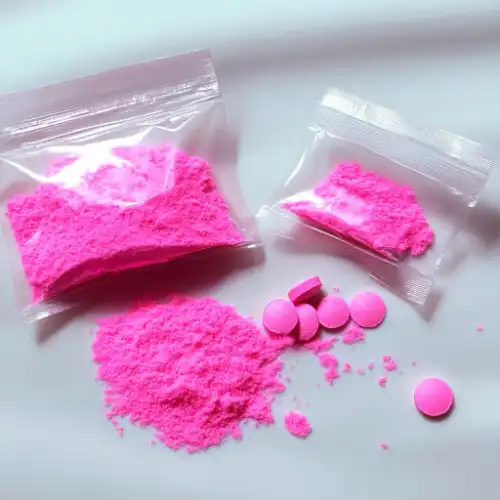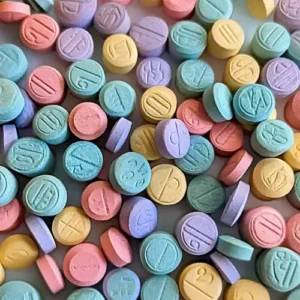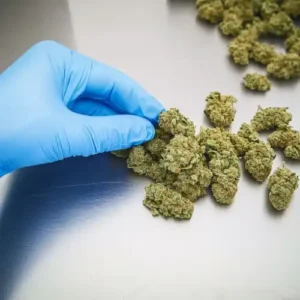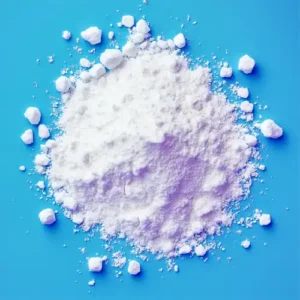What Exactly is Pink Cocaine?
Pink cocaine has been featured in the news a lot recently. But what is it? Well, despite its name, this trendy party drug rarely contains any actual cocaine. Instead, it’s a dangerous cocktail of various substances, typically including MDMA (ecstasy), ketamine, and sometimes methamphetamine. Drug makers add food colouring and strawberry flavouring to give it its distinctive pink hue, making it more visually appealing to young clubbers.
You’ll find pink cocaine in two main forms: pills or powder that users typically snort. Known by various names including “cocaina rosada”, “tuci”, “Venus”, and “Eros”, it sells for about £76 per gram in Spain, where dealers market it as a premium product.
A Brief History
The story of pink cocaine starts with American biochemist Alexander Shulgin, who first created a psychedelic version in 1974. But today’s pink cocaine bears little resemblance to that original compound. The modern variant emerged around 2010 in Colombia, quickly spreading through Latin America’s club scene before making its way to Europe.
Why It’s So Dangerous
As with most drugs, taking pink cocaine is like playing Russian roulette with your health. Unlike taking a pure substance, where users might know what to expect, pink cocaine’s effects are wildly unpredictable because its ingredients vary from batch to batch.
The mix of stimulants and depressants poses serious risks. While MDMA creates euphoric feelings and enhanced sensory perception, ketamine acts as a powerful anaesthetic with hallucinogenic effects. This combination can lead to:
- Heart attacks
- High blood pressure
- Increased stroke risk
- Severe anxiety
- Depression
- Psychosis
- Overdose
What makes matters worse? Standard drug testing often struggles to detect all components in pink cocaine, making it harder for health services to help someone who’s taken it.
The Growing Problem
Pink cocaine has spread far beyond its South American origins. Spanish authorities recently carried out their biggest-ever synthetic drug bust, seizing massive quantities in Ibiza and Malaga. The drug has also gained a foothold in the UK, with cases reported across Scotland, Wales, and England.
The problem isn’t confined to just here in Europe either. Nope. From New York City’s nightclubs to Southeast Asian party spots, pink cocaine keeps popping up in new locations. Its flashy appearance and “designer drug” status particularly appeal to young people and first-time users, mimicking how cocaine and MDMA gained popularity in previous decades.
What’s Being Done About It?
Good question. In the UK, while pink cocaine isn’t specifically named in drug laws, its components fall under strict control. MDMA and 2C-B are Class A drugs, while ketamine sits in Class B under the Misuse of Drugs Act 1971.
Health experts are certain of the need for better drug-checking services. These could help users identify dangerous substances before consumption, potentially saving lives. Public health bodies across Europe have started to raise awareness about pink cocaine’s risks. Clearly though they’re playing catch-up with a rapidly spreading problem.
Protecting Yourself and Others
If you’re heading to clubs or festivals, remember that pink cocaine’s attractive appearance masks serious dangers. The drug’s unpredictable mix of ingredients means you can’t know how it might affect you or your friends.
Look out for these warning signs if someone’s taken pink cocaine:
- Sudden mood swings
- Unusual anxiety or paranoia
- Breathing difficulties
- Loss of consciousness
Always call emergency services if you suspect someone’s having a bad reaction. When it comes to pink cocaine, it’s smart to err on the side of caution. Keep in mind: this drug isn’t like your typical party substance. It’s dangerous because it mixes uppers and downers, and you’re more likely to come across it in clubs these days since it’s getting more popular. Know the facts, take care of yourself, and keep an eye on your friends.
Photo: “Pink Cocaine” by Anthony Cunningham for Zoom Testing
Zoom Testing is a leading UK drug testing company and a supplier of Drug Test Kits.





